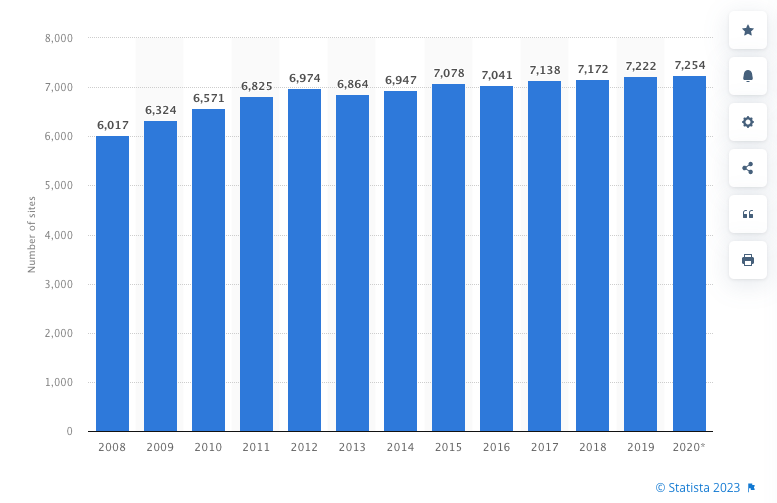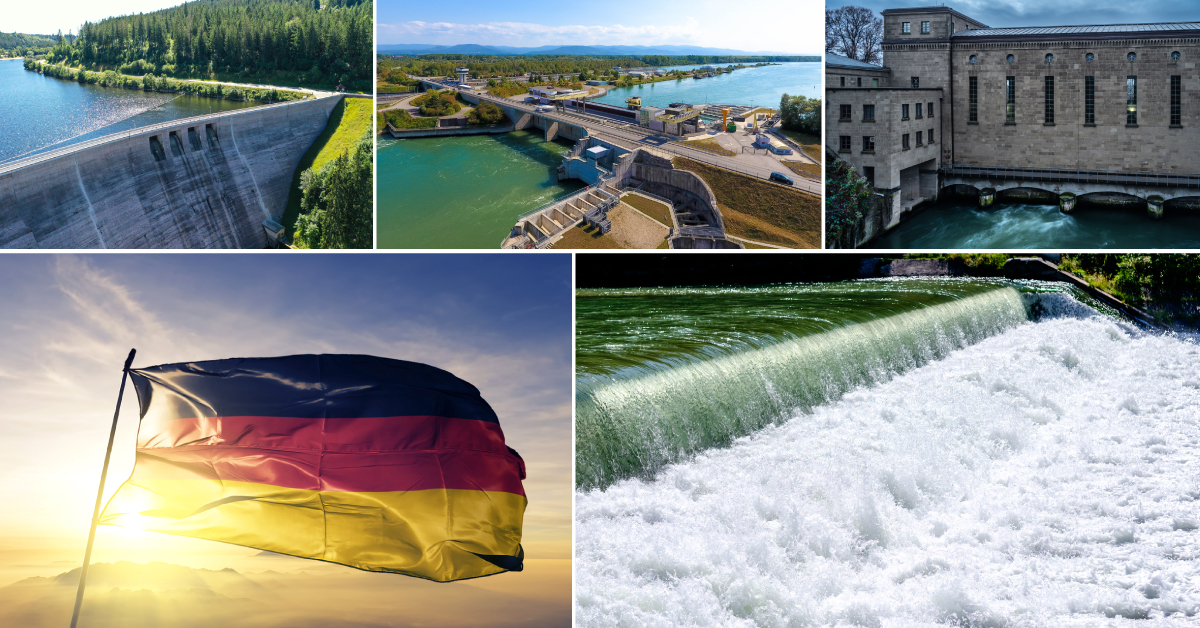Hydropower is one of the oldest sources of electricity, and it still stands as the main kind of renewable energy: about 16% of worldwide electricity output comes from hydropower. In Germany, hydropower energy corresponds to up to 4.3% of the country’s production, depending on the season.
Since the Paris Agreement and its net-zero target, there has been an increasing demand for the expansion of renewable energy. A quick search for hydropower renewable energy will return several papers and reports about the importance of this power source.
Investment in this sector worldwide has reached the mark of USD 36.3 billion, and it’s likely to continue to rise in the following years. After all, it’s much more effective than traditional renewable sources, like solar and wind, and also a much safer nuclear power. In this article, we’ll discuss the current situation and predictions for hydroelectric power in Germany.

Hydropower: Definition and Background
What is hydropower energy? Hydropower energy follows the same guiding principles since its invention: it’s generated by water turbines that turn kinetic energy into electricity.
The first attempts to harness electricity from water currents date back to the 19th century when the first arc lighting was created using a water turbine. In 1881, a similar technology was already providing streetlights in Niagara Falls, New York. The technology became more widely used, with the introduction of alternating current, which allowed electric currents to travel long distances.
The generation of hydropower is also subjected to environmental issues, such as droughts, floods, and others. Severe droughts in the past two years, combined with the impact of Covid-19, have slowed the production and expansion of green energy hydropower. Still, this sector kept growing during this period, mostly due to massive investments made by the Chinese government in hydropower in China. Nowadays, the main producers of hydropower are China, Canada, and Brazil.

Main Sources
There are mainly three types of hydropower plants, depending on the size and purpose of the project. Learn more about each kind in this section.
Impoundment
Impoundment plants are the most used type, and also the most popular. Impoundment plants are massive facilities built nearby rivers or other water reservoirs. Here, the water spins inside a turbine, generating kinetic energy. This energy is then transformed into electricity. Run-of-the-river plants are the most common kind of hydroelectric power plant, not only in Germany but worldwide.
Pumped Storage
Pumped storage systems move the water from the lower to the upper part of a reservoir system. The water is then released from the upper part, creating an artificial waterfall, also spinning the turbines. This process isn’t constant and occurs when there’s an increased demand for energy supply.
Diversion
In some cases, there’s no need to build the hydropower structure for the whole river. It’s also possible to create a diversion in the river, where water would be directed with the sole purpose of generating electric power. Diversion plants almost never require a dam, as part of the river is diverted through an artificial canal.
Hydropower in Germany - Current Status
Germany is one of the champions of green energy in the European Union and worldwide. Most of the country’s hydropower output comes from the Bavaria region (50% of it), where the mountainous landscapes make perfect locations for such power plants; 20% is located in Baden-Wurttemberg. There are over 7,000 hydropower plants in Germany today.
If it’s true that hydropower still makes up a small portion of the total power supply, it’s also one of the most reliable and predictable sources. Indeed, hydropower makes part of the grid of all of its “electrical neighbours”. Part of it comes from Nordlink’s subsea cable between Germany and Norway. Austria, Switzerland, and Luxembourg provide hydropower clean energy from the south, contributing roughly 3.5GW of the German system. Germany has more than 6,000 MW of installed capacity inside its territory.
This kind of energy still makes up a small proportion of Germany’s power grid. Yet, Germany managed to break its record in 2022, generating 256 TWh (terawatt hours), or about 46% of its total output. Nevertheless, Germany is still behind the schedule for 2030, when it’s expected to have 80% of its output coming from renewable sources.
Although hydropower isn’t the only renewable resource considered in the stats above, this sector is set to grow up to 1.4 GW by 2030. Nevertheless, about 30% of the capacity will come from power plants outside of the country. During this period, there are plans to build five new plants; three in the country and two abroad. The new plants are expected to increase the total capacity by 6.3 GW, plus 3.4 GW of the two plants located abroad.
Hydroelectric Power Plants and Supplies by Premel
Premel was established in Switzerland, in 1947, and it has been a leading brand in the global market for solutions and supplies for all types of hydroelectric power. The company has an ISO 9001 certification, assuring the high standards of its products and services. More than top-notch equipment and supplies, Premel also provides a team of highly trained professionals, who are always ready to help clients, even past sales.
Here, you’ll find everything you need for setting up a new hydroelectric power station or upgrading old hydroelectric power systems. Premel offers a wide range of engineering solutions, including general managing services, power generators, and other supplies. It means Premel is a one-stop station for hydroelectric solutions for different industries.
Premel has the technological solutions your project needs to thrive. You can count on the collaboration of our engineers and technicians to bring your project to life. More than a mere supplier, Premel works side by side with its clients, creating a meaningful and long-lasting partnership. Learn more about Hydroelectric Power Plants from Premel.
